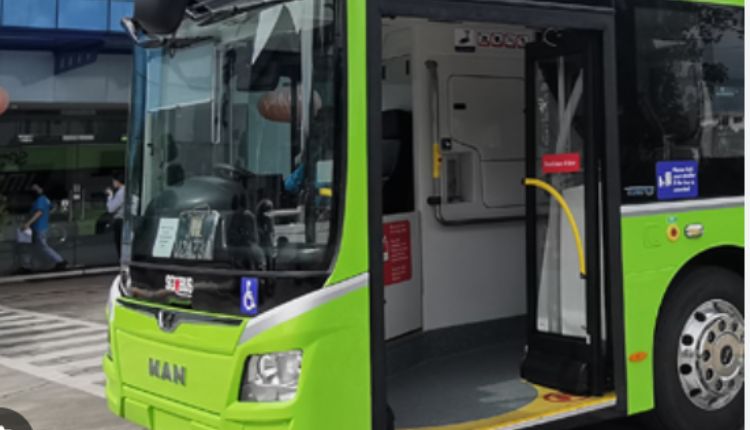Busdoor – The Future Of Public Transport
Busdoor is a system that allows buses to safely open and close. It uses a combination of sensors to detect obstructions and stops movement if an object is detected. Crowding around bus doors directly affects operations because passengers must push through a mass of people when boarding and alighting. This analysis applies to one-door and two-door buses – although their designs and operations differ significantly.
Demand For Safe Public Transport
The demand for safe public transport is increasing worldwide as people look to reduce their carbon footprint. This is driving the growth of buses that can carry large numbers of passengers, including articulated buses. This is also helping drive the market for automated bus door systems, which are designed to improve passenger safety and optimize boarding and alighting processes.
Brozen suggests that it is important for policymakers to take a nuanced approach to public transit safety that takes local conditions into consideration. This could include strategies such as providing PPE kits, seat availability information, limited passenger allowance, and regular disinfection of buses at end-to-end stoppages. This is in addition to improving services by reducing the frequency of stops and ensuring service continuity.
Advancements In Automation And Sensor Technologies
Sensor technology is a cornerstone of automation, helping to improve efficiency and safety in many industrial environments. From condition monitoring on manufacturing floor machinery to precise surgical procedures, sensors are critical in a wide range of applications. Sensor technologies are continuing to evolve, resulting in new capabilities and cost-effective solutions for a variety of industries. For example, an image sensor that uses a global shutter rather than a rolling one provides fewer blurry images and lower energy consumption.
Moreover, a single CPU that can handle motion, machine vision, and control functions simplifies the architecture of automated production systems. It also allows users to program in the same IEC 61131 language used by programmable logic controllers (PLC). Smart force and torque sensors help increase the effectiveness, quality, controllability, management, and transparency of industrial processes in the age of the industrial internet.
Increased Demand For Connected Infrastructure
As economies grow, so do infrastructure requirements. The need for high-speed connectivity is rising globally, fueled by teleworking and remote applications. This is creating a demand for fiber optic networks, 5G, and mobile towers. In addition, rapid urbanization is driving the need for efficient public transport systems to reduce traffic congestion and environmental pollution. As a result, more cities are prioritizing expanding and improving their transportation network to ensure that the growing population has access to safe and affordable public transit.
IMARC Group’s global automated Busdoor system market report offers an in-depth analysis of key trends, drivers, and challenges. The report segments the market based on bus type, door type, mechanism, and level of automation. Moreover, it includes forecasts at the global and regional levels from 2023 to 2028.
Reliability And Maintenance Requirements
Increasing reliability and maintenance requirements have led to higher demand for bus doors. This is because buses require regular inspection and maintenance to ensure safety and efficiency. Furthermore, a bus’s doors are often exposed to the elements, which can cause corrosion and wear and tear.
Many countries have established regulations requiring the use of automatic bus doors in public transportation vehicles. This is expected to drive growth in the market for bus door systems over the next five years. Some of the key players in this industry include Schaltbau Bode, Beijing Sade Bus Door Manufacturing, Masats S.A, and Ventura Systems CV. Some of these companies offer a range of products for buses, including passenger doors and roof hatches. They also provide accessories such as push buttons, HVAC, and key locks.
Defective Bus Doors
Defective bus doors are a major contributor to party bus injuries. These doors can open unexpectedly and cause passengers to fall off the vehicle, resulting in severe injury or even death. Many companies are selling these substandard doors to unsuspecting customers, which is why the number of party bus accidents is rising.
A coroner’s report found that the door involved in James’ accident did not have a working “door ajar” warning system. The problem had been noted by mechanics as early as 2011, but the repairs never took place. A wide range of manufacturers produce bus doors and hatches for the transportation industry. These products include sliding, inward-opening, and outward-opening passenger doors. They may also have other features such as air conditioning and HVAC systems, push buttons and handles, and key locks.
Conclusion
The demand for Busdoor has risen due to advancements in automation and sensor technologies. This has increased the safety of public transportation vehicles and led to a reduction in fatal accidents. Automatic doors involve complex mechanical and electronic components that require frequent maintenance to ensure optimal performance. Issues with these systems can create concerns among transit operators and lead to resistance to adopting them.



